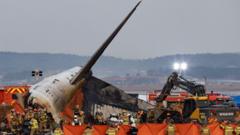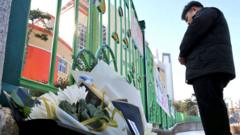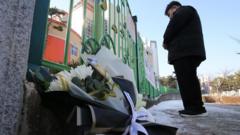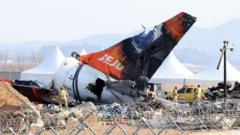In response to a devastating plane crash attributed to a bird strike, South Korea is requiring all its airports to implement bird detection cameras and thermal imaging systems by 2026. This initiative aims to bolster aviation safety and reduce the risk of similar incidents.
South Korea Enhances Airport Safety with Bird Detection Technology Following Fatal Crash

South Korea Enhances Airport Safety with Bird Detection Technology Following Fatal Crash
Following a tragic air disaster that claimed 179 lives, South Korea mandates the installation of bird detection systems across all airports to prevent future strikes.
In a significant safety measure following a deadly air crash, South Korea has mandated the installation of bird detection technology across all airports. This decision comes in the wake of the December tragedy that resulted in the loss of 179 lives, marking it as the deadliest aviation accident on South Korean soil.
Reports released last week by investigators revealed evidence of a bird strike involving a Boeing 737-800, with feathers and blood found on the engines. As investigations continue, the focus is on the implications of bird activity during the flight and a concrete structure that the aircraft struck after attempting an emergency landing.
The Ministry of Land announced Thursday that bird detection radars will be installed at all national airports. These advanced systems are designed to detect bird size and movement, relaying critical information to air traffic controllers to enable proactive management of bird hazards. In addition, at least one thermal imaging camera will be deployed at every airport, an upgrade from the current scenario where only four airports possess such technology.
The move is part of a broader strategy to enhance runway safety, which also includes relocating bird-attracting sites, such as rubbish dumps, away from airport vicinities. This initiative follows a comprehensive review conducted after the crash, which also prompted adaptations to the safety areas of seven specific airports.
The investigation into the crash is ongoing, but experts have highlighted that the death toll may have been significantly lower if not for the concrete structure obstructing the plane’s emergency landing. On December 29, the flight operated by the budget airline Jeju Air, taking off from Bangkok to Muan International Airport, encountered bird activity shortly after establishing contact with air traffic control. Despite issuing a mayday signal, the plane ultimately crashed and exploded after losing control.
In total, 179 passengers were onboard, comprising mainly middle-aged individuals, with only two cabin crew members managing to survive the tragic incident. The preliminary findings note that flight data and cockpit voice recorders failed to capture crucial moments shortly before the crash, raising further questions as investigations proceed.
As South Korea implements these new safety protocols, the aviation sector and passengers alike are hopeful that such tragedies can be prevented in the future.



















